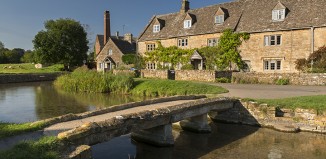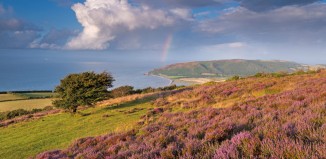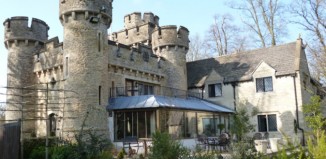Crowcombe Court
Crowcombe Court was built as a statement of wealth and a house in which to entertain by Thomas Carew. Completed in 1739 by Nathaniel Ireson, who also built Stourhead and Ven House, the style is described as Regional English Baroque and sits between the Queen Anne and Georgian periods. The house was owned by the Carew family descendants until the 1950s and then following a number of incarnations was saved and restored to its former glory over the last 13 years. The Great Hall makes for a grand entrance with fine examples of Italian plasterwork throughout. The Ballroom, remodelled in the 1870’s reputedly by Edward Barry, is a riot of Victorian colour and style. The superb marble fireplace is thought to have come from Stowe.
The dining room floor is painted with the Arms of the Carew family. The house also benefits from vaulted undercrofts which would have held the winter stores for the household. When open the tour includes access to the two principle bedrooms as well as the private Drawing room of the owners David and Kate Kenyon. The house holds a number of significant items of furniture and paintings. The principle reception rooms are hung with later tapestries.
The chatelaine Kate Kenyon is a direct descendent of James Morrison subject of a recent biography entitled “A genius for money”. Morrison was described as the richest commoner in England in the 18th century and his wealth allowed him to build or purchase a number of great houses including Basildon Park and Fonthill. Later generations have held property in Herefordshire, Wales and the Hamptworth estate in Wiltshire. Crowcombe Court is the most recent manifestation of the inheritance which has come down the generations. The gardens at Crowcombe Court, which run to over 10 acres, have been neglected for more than 50 years. The Kenyons have begun a project, currently in its early stages, called “See the Garden Grow” which will restore these grounds which include, in various states of restoration, a walled kitchen garden, a wild garden, an arboretum and a small lake. When open tours include the gardens and give visitors an opportunity to see the garden at the early stages of renovation. Visitors are welcome to continue to enjoy them after the tour is completed.
The HHA represents 1500 privately-owned historic houses, castles and gardens throughout the UK. These are listed buildings or designated gardens, usually Grade I or II*, and are often outstanding. Many are considered to be iconic symbols of Britain’s unique heritage.








